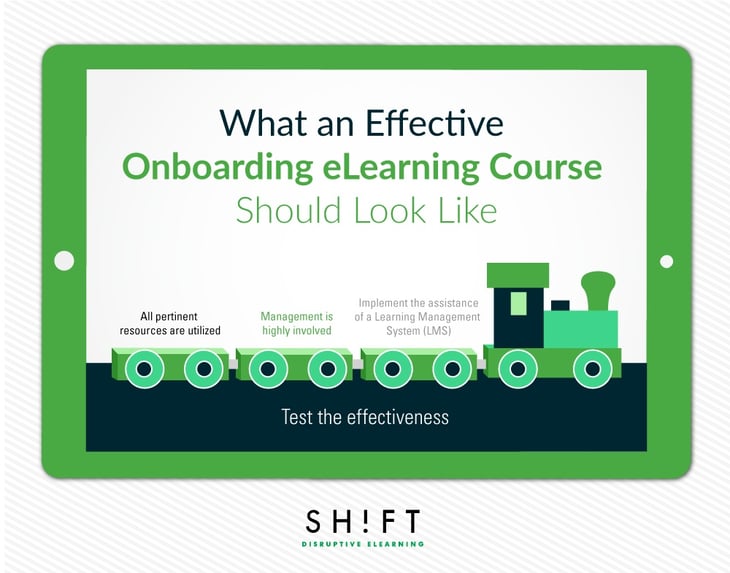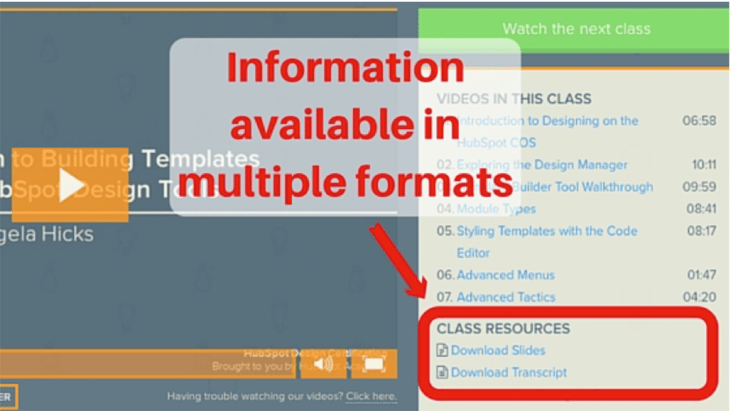Modern Employee Training Goes Beyond Company Handbook Distribution
Staff retention within a company is an aspect that can be difficult to master. Losing a valuable employee has damaging financial and managerial effects. When someone in your company leaves, you are left with a gaping hole where a wheel used to be. In order to fill it, you will need to enlist your recruiting team to find new candidates, manage to hire the right one, then re-train the next wheel to function as well as or better than the last one. Retention is not about luck.
High performance within a company is directly dependent upon the intellectual capital you build internally, and this is where onboard learning comes in. Information herein pertains to ongoing education inside your company, NOT new employee orientation. The most effective contemporary onboard training will most certainly contain or be mainly comprised of elearning strategies. In this post, we'll go over how it should look like.

What Are the Components of Effective Onboard Training Strategy?
The first thing you need to consider, when creating an eLearning plan for your employees, are the components of business training that are proven to be the most successful. According to Donald L. Kirkpatrick, you should pay the closest attention to two major factors:
1) All Pertinent Resources Are Utilized
You begin to understand which of your resources are going to be the most valuable through thorough analysis. The first step is to see who you have available, throughout multiple departments, to aid the evaluation process, which should be taken very seriously. The next step is actually to analyze, going through each available resource with a fine-toothed comb. Successful training will depend highly on analysis.
Only after your internal analysis is complete, can you make educated decisions for your training program outline based on statistics and data drawn from inside your company. Account what you have currently, compare it to what your organizational goals are, and prep your rough course outlines to help you reach them.
2) Management is Highly Involved
Anyone who will be involved with managing new employees and any existing employees that will be taking your training should be partners in the project of training creation. Even if you end up outsourcing your training strategy to specialists, make sure that your managers are involved. They have the most valuable insight into what will work within your structure - many times even more than CEOs when it comes to internal training.
How Can You Test the Effectiveness of Your Company Learning Platforms?
For those with training systems already in place, and in the future, testing will have to be done to find the success rate of the programs your company employs. Some learning plans that have been in place for 1-10+ years -- especially older plans -- require scrutiny and analysis as much as a plan that has just been written. The testing for agendas currently in place should be executed in four parts.
1. Reaction
What is the reaction witnessed after staff members go through a course? Are they more productive and creative? Or are they disgruntled and apathetic afterward? Choosing a platform and course outline that enhances performance is the reason for any business training. If your courses are making people irritated, there is something wrong, and you need to make changes.
2. Learning
Some employees will be able to learn most efficiently from one medium or another. Therefore, you need to test the understanding of your courses. You can do this through quizzes and exams within your platform or through performance reports. The first method may be the most effective.
3. Behavior
This part is not the same as a reaction, but should focus on the long-term behavior of staff that has gone through one or several of your education programs. Analyze employee actions over time, and look for trends amongst those who have taken the same courses.
4. Results
The final section of your analyses should pertain to the company results, not individual. Dedicate this time to looking at conversions, sales, and contracts that are acquired after a segment finishes a particular training. Is employee retention stronger? Weaker? Are you generating more revenue? The overall purpose of individual training is to contribute to the success of your company as a whole, so this category needs to be given high significance.
The point of scrutinizing these four categories is to build a chain of evidence to help you improve and build upon your onboard eLearning strategy. This evidence should be recorded and utilized amongst everyone who is in charge of planning and implementation of your courses and training.
eLearning Tools for Internal Employee Education
Outlining and analyzing your courses is the first part of creating effective employee training. The tools you implement will be the next part. Of course, you should have a great employee handbook, but this barely scratches the surface of onboard learning. Implementing elearning tools into your plan is a necessary component of the process.
The best advice you will receive is to implement the assistance of a learning management system (LMS). You won’t need to enlist your programmers, and you will be able to collaborate with the entire planning and instruction teams in one place. This is step one of the implementation of your eLearning strategy.
In the next step, you will want to ensure that your materials are covered in such a way that they are well-organized, valuable, and engaging.
- Structure your courses so that they are clear and relevant to the intended audience.
- Deliver information in multiple forms of media.

- Gamify courses.
- Test for understanding.
- Survey learners to find out what you can do better.
Final Thoughts
When creating an onboard elearning experience for your staff, the first step is a stellar course strategy. Next, understand the importance of and methods for evaluating your lessons. Finally, implement the tools that work best for business training. Follow this recipe for success, and you will be well on your way to higher employee retention and measurable company success.
About the author: Marry McAleavey is an elearning specialist at the essay service company. She is a former teacher with 10 years of experience in education."
Sources:
Lorraine Boyd (2002). E-learning: a Step Change in Developing our People. Legal Information Management, 2, pp 34-36. doi:10.1017/S1472669600001213.
Kirkpatrick, Donald L. Implementing the Four Levels: A Practical Guide for Effective Evaluation of Training Programs
Image sourced from http://academy.hubspot.com/ on Apr. 27, 2016.


